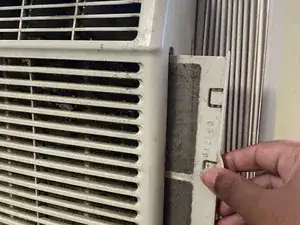
How to Clean the Danby Room Air Conditioner Filter
Es werden einige allgemeine Werkzeuge verwendet, um an diesem Gerät zu arbeiten. Du wirst nicht jedes Werkzeug für jeden Vorgang benötigen.
HVAC stands for heating, ventilation, and air conditioning. It is the technology used to provide thermal comfort and acceptable air quality indoors and in vehicles. The system design of HVACs are a sub-discipline of mechanical engineering, based on principles of thermodynamics, fluid mechanics, and heat transfer. Sometimes, “refrigeration” is all added to the field of HVACs as HVAC&R or HVACR. “Ventilation” is sometimes dropped to form HACR especially in the designation of HACR-related circuit breakers.
The purpose of HVACs are to provide good air quality and appropriate thermal comfort especially in residential structures such as single family homes, apartment buildings, hotels and senior living facilities, and medium to large industrial and office buildings including skyscrapers and hospitals. Moreover, HVACs are also important in vehicles such as cars, trains, airplanes, ships, and submarines. Speaking of submarines, HVACs are also required in marine environments where safe and healthy building conditions are regulated with respect to temperature and humidity, with the use of fresh air from outdoors.
In terms of air quality, the “V” in HVAC is for ventilation, the process of exchanging or replacing air in any space to provide high indoor air quality which involves temperature control, oxygen replenishment, and removal of moisture and odors, heat, smoke, dust, airborne bacteria, and carbon dioxide among other gases. Ventilation is important as it eliminates unpleasant smells and excessive moisture by introducing fresh outside air. This process keeps the air circulating.